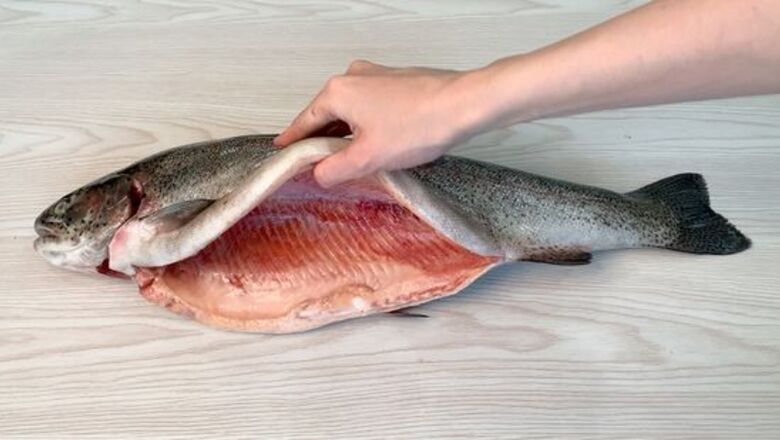
views
Wrapping the Salmon
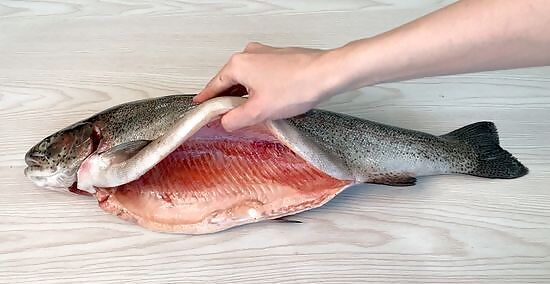
Clean and gut fresh salmon if you caught your own fish. Make a messy job easier in the long-run by cleaning fresh, whole salmon when you get it home. This way, you just need to thaw your frozen salmon and you can get right to cooking! If you can't get it in the freezer after you bring it home, plan to freeze it within 2 days of buying the fish and keep it in the fridge until then. Buying whole salmon from the market? Most fishmongers are happy to clean and gut the entire fish for you.
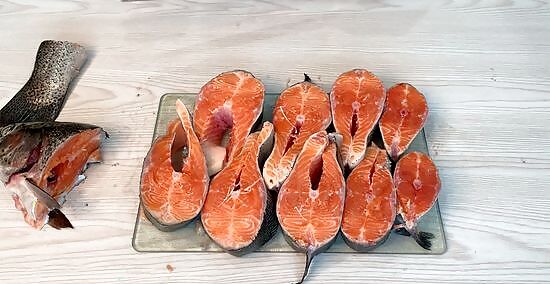
Cut salmon into fillets or steaks depending on how you're going to cook them. Think about how you'll eventually cook your salmon and cut it into portions. For example, if you want to roast salmon on a tray with veggies, you might cut 2 large fillets. If you're going to serve a salmon dinner to a crowd, you could cut them into steaks instead. If you feel like de-boning the salmon, you can do it now or wait until you defrost the fish. It's totally up to you! Cut your salmon into small quartets of filets if you plan on using it for sushi. Be sure to make clean cuts with a sashimi knife.
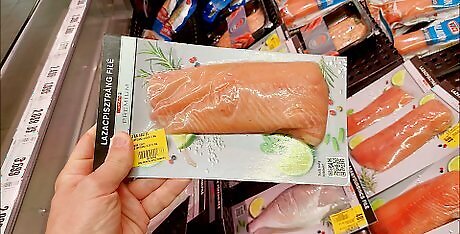
Leave shrink-wrapped salmon in its packaging. Sometimes, fresh salmon that you get from a seafood counter is already in an airtight package. This is even more likely if you bought lox or smoked salmon. Don't take the fish out of it since the original packaging is really effective at trapping smells and protecting the salmon from freezer burn. It's a good idea to check the expiration date on the package of salmon. Don't freeze salmon that's past its expiration date.
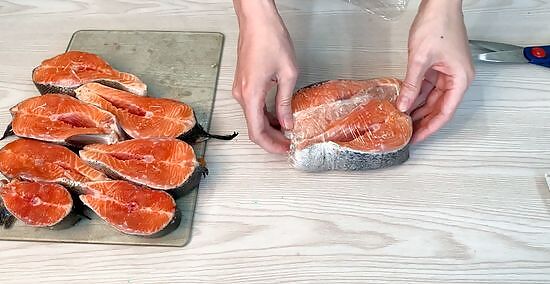
Cover the salmon completely with plastic wrap. It only takes a few minutes to get your salmon ready for the freezer. Tear off a piece of plastic wrap and lay it flat on your counter. Set your cleaned salmon on 1 end of it and fold the plastic wrap over the fish. Keep folding the salmon over so it's completely wrapped in plastic. Try to press as much of the air out as you can as you wrap the fish. If you're storing salmon in its original packaging, you can skip this step or wrap it in aluminum foil for extra protection against freezer burn. Want to package several pieces of salmon? No problem! Just wrap each piece individually instead of stacking them and wrapping them in 1 piece of plastic wrap. This makes it a lot easier to defrost them.
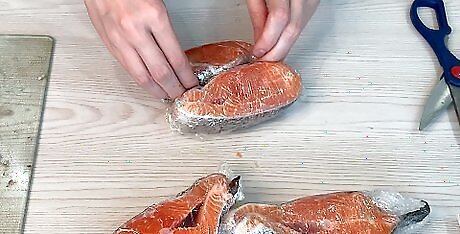
Seal the salmon in a vacuum pack if you'd like extra protection from freezer burn. If you've got a lot of raw salmon that you're storing or you'll be freezing it for a long time, it's probably a good idea to invest in a vacuum sealer. Put your plastic-wrapped salmon into a vacuum bag and insert the end into your machine. When you turn it on, the vacuum sealer sucks all of the air out of the bag. Treat the vacuum-packed salmon gently since you don't want to pop the bag.
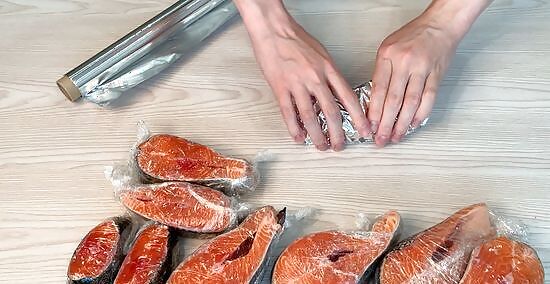
Fold aluminum foil around the wrapped salmon if you don't have a vacuum sealer. Give your plastic-wrapped salmon an extra layer of protection in the freezer. Just tear off a piece of heavy-duty aluminum foil and lay it flat. Then, set the wrapped salmon on 1 end of the foil and fold the fish over to completely cover the package in foil. The aluminum foil also stops pieces of plastic-wrapped salmon from sticking to each other. If you used a vacuum sealer, you can skip this step.
Labeling and Storage
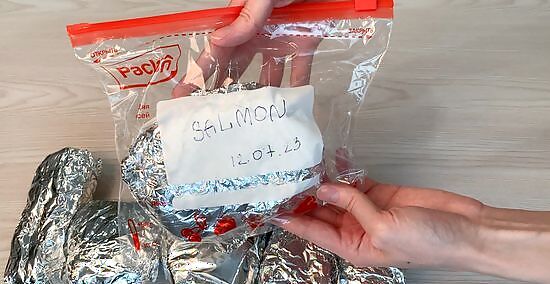
Put the salmon into an airtight freezer bag and label the outside. Stick the wrapped salmon or salmon portions into a big freezer bag. Squeeze out the air and seal the bag shut. Now comes a really important part—labeling the bag! It's super easy to forget what things are when they've been in your freezer for months, so use a permanent marker to write down as much useful info as you can. For example, write down 4 salmon steaks, 1 fillet, and the date. This lets you know at a glance what's in the bag without needing to open up and unwrap the fish.
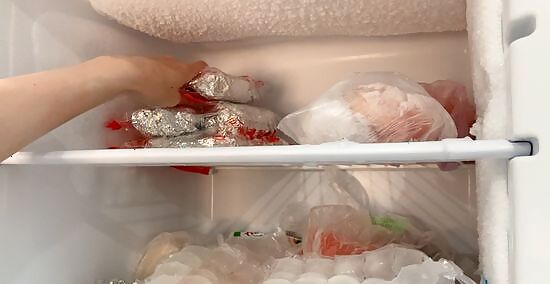
Stick the bag of salmon in the coldest part of your freezer. Not sure what the coldest area is? It's usually farthest back against the wall where it takes longer for warm air to reach. It might not seem like a big deal, but keeping your salmon as cold as possible means you can store it for longer. Now's a good time to check your freezer temperature. Set the freezer to 0 °F (−18 °C) for the best storage conditions.
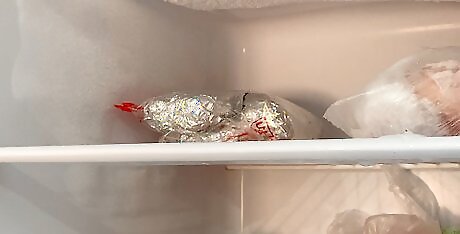
Freeze the salmon for up to 3 months. Although you can freeze raw salmon indefinitely if your freezer is at 0 °F (−18 °C), the salmon might become soft or mushy the longer it's stored. For the best texture, try to defrost and cook the salmon within 3 months of sticking it in the freezer. If you add new packages of raw salmon to your freezer, follow the first in, first out rule and use the older salmon before defrosting the salmon you just put in.
Defrosting
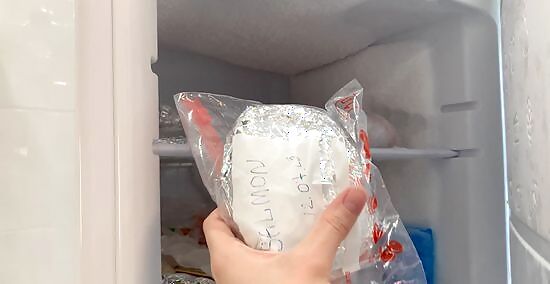
Defrost frozen salmon in the fridge overnight for the best texture. There's no need to unwrap the salmon. Just transfer the frozen package of fish to your fridge and that's it!
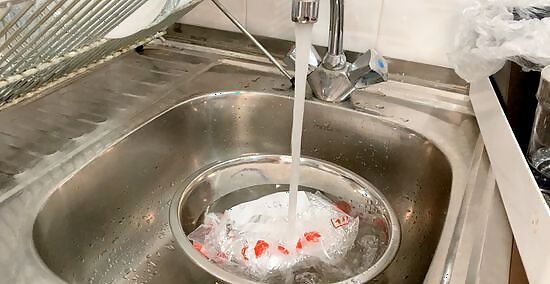
Put frozen salmon in cold water if you want to defrost it in 1 hour. Sometimes, it's tricky to plan your next day's meal. If you decide that you'd like to cook salmon for dinner, but it's still frozen, there's still time! Take the bag out of the fridge and put it into a large bowl. Fill the bowl with cold water and put something heavy on the bag so the salmon is submerged. Then, check the salmon after 30 minutes to see if it's thawed. If the salmon is still solid, replace the water with cold water and check it again in 30 minutes.
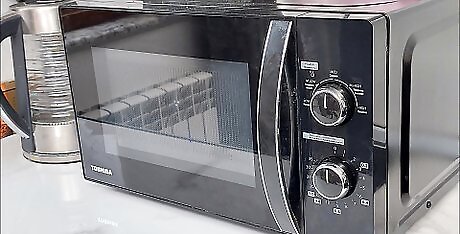
Use the defrost setting to microwave the salmon if you're short on time. Forgot to take the salmon out of the freezer? Don't worry. Unwrap the salmon and put it in a microwave-safe dish. Use the defrost setting to thaw the salmon until you can bend it, but there's still ice on the fish. This should take around 5 minutes for 1 pound (450 g) of salmon. Then, take the salmon out of the microwave and cook it immediately. The defrost setting automatically reduces the power level on your microwave so you don't have to choose a heat setting.
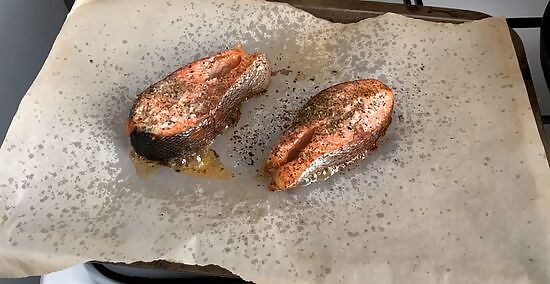
Cook the salmon immediately after defrosting it. While the salmon is defrosting, decide how you'll cook it so you can start heating the fish as soon as it's fully defrosted. It doesn't matter what cooking method you choose—roasting, grilling, searing—as long as you work quickly. You don't want harmful bacteria to grow because you accidentally left your salmon out. The exception to this is if you defrosted your salmon overnight in the fridge. Since you didn't warm the salmon to thaw it, you can keep it in the fridge for up to 2 days before cooking it.




















Comments
0 comment